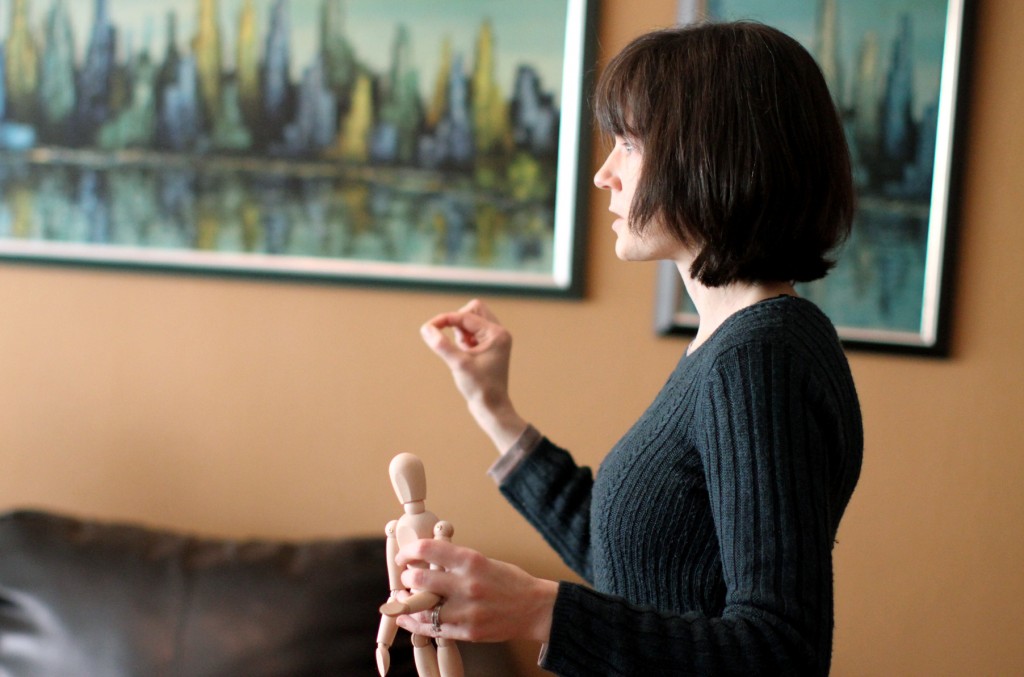What Is NeuroMovement®? NeuroMovement is a holistic approach to human functioning and action, based in the understanding that movement is the language of the brain. Movement provides information the brain needs to grow and organize itself. In return, the brain organizes all movement, thought, feelings, and action. Movement includes not only movement of the body in space—the movement of the skeleton and muscles—but also the movement of thinking, emotion, and feelings. All action involves movement in all aspects of the self.
In NeuroMovement, the brain is understood to be a self-organizing information system with mind and body integrated at all times. It is formed and apprenticed holistically through its experiences of all aspects of movement. Children are born to be amazing learning machines—their brains growing and forming at a staggering rate of 1,800,000 new connections per second. In early infancy, movements are random and involuntary for the most part, yet these experiences feed the brain with information it uses to form recognizable patterns and to organize and control all dimensions of movement.
The science of brain plasticity shows how, under the right conditions, the adult brain can also restructure itself in remarkable ways. Even the birth of new brain cells can occur in adults, as well as children, something believed impossible not too long ago. What does this mean? It means that old dogs really can do new tricks! It means that people of all walks of life can improve and upgrade. Imagine being able to walk more easily, even elegantly. Imagine being able to remember where you left your keys. Imagine having hope that your child isn’t relegated to the prognosis that the doctor gave.
This why NeuroMovement focuses on the brain. People have the ability to become a lifelong learners, and Anat Baniel has found a way to facilitate learning at a deeper level with The Nine Essentials.
For more information:

The Nine Essentials
- Movement with Attention
Bring attention to what you feel as you move. Your brain will immediately start building billions of new neurological connections to help you change, learn, and transform.- Slow
Slow way down to learn new skills and overcome limitations. Fast you can only do what you already know. Slow stimulates the formation of rich new neural patterns.- Variation
Introduce variation and playfulness into everything you do. Your brain will get the information it needs to create new possibilities in movements, thoughts, and actions.- Subtlety
Reduce the force with which you move, think, and act. Developing greater sensitivity will enhance your brain’s ability to perceive the finest of differences.- Enthusiasm
Practice enthusiasm in your daily life. Enthusiasm tells your brain what is important to you, amplifying whatever that is and infusing it with energy to grow more.- Flexible Goals
Know your goals and embrace all the unexpected steps, missteps, and re-routes along the way. These are a rich source of valuable information for your brain.- The Learning Switch
For the brain to properly do its job, the learning switch needs to be turned ON. Expect that you will do, think, or learn something new in each situation, even familiar ones.- Imagination & Dreams
Imagine how to carry out your tasks and dream up as many possibilities as you can. Imagination & dreams guide your brain to continue growing and developing.- Awareness
Become aware of what you are doing, sensing, thinking, and experiencing at any given moment. When you are awaring, your brain is working at its highest level.
Brain plasticity is a common term used by neuroscientists, referring to the brain’s ability to change structurally, functionally, and chemically at any age—for better or for worse.
In the words of Dr. Merzenich, one of neuroscience’s foremost experts:
Brain plasticity science is the study of a physical process. Gray matter can actually shrink or thicken; neural connections can be forged and refined or weakened and severed. Changes in the physical brain manifest as changes in our abilities. For example, each time we learn a new dance step, it reflects a change in our physical brains: new “wires” (neural pathways) that give instructions to our bodies on how to perform the step. Each time we forget someone’s name, it also reflects brain change— “wires”that once connected to the memory have been degraded, or even severed. As these examples show, changes in the brain can result in improved skills (a new dance step) or a weakening of skills (a forgotten name).
Below is a podcast where Dr. Doidge and Dr. Merzenich discuss questions about brain plasticity.
Dr. Merzenich also recorded a TED Talk, The Elastic Brain, on the growing evidence that our brains do have the ability to change and what that means for our perception of self, for children with learning impairments, for the elderly, and for society in general.
Move Into Life and Kids Beyond Limits are authored by Anat Baniel, creator of the Anat Baniel Method. Move Into Life tells you how you can experience renewed, intensified vitality—greater health, flexibility, strength, sensuality, clarity of mind, and enthusiasm throughout your life. Kids Beyond Limits focuses on how incorporating the Anat Baniel Method’s Nine Essentials has transformed the lives of children with special needs and the lives of their parents.
In Soft-Wired, Dr. Michael Merzenich—a world authority on brain plasticity—explains how the brain rewires itself across the lifespan, and how you can take control of that process to improve your life. In addition to fascinating descriptions of how your brain has produced your unique memories, skills, quirks, and emotions, Soft-Wired offers sound advice for evaluating your brain, and gives clear, specific, scientifically proven guidance for how to rejuvenate, remodel, and reshape your brain to improve it at any age.
The Brain That Changes Itself and The Brain’s Way of Healing are two New York Times bestsellers wherein Dr. Norman Doidge shares phenomenal stories of recovery and how neuroplasticity is breaking boundaries in what we know to be possible.